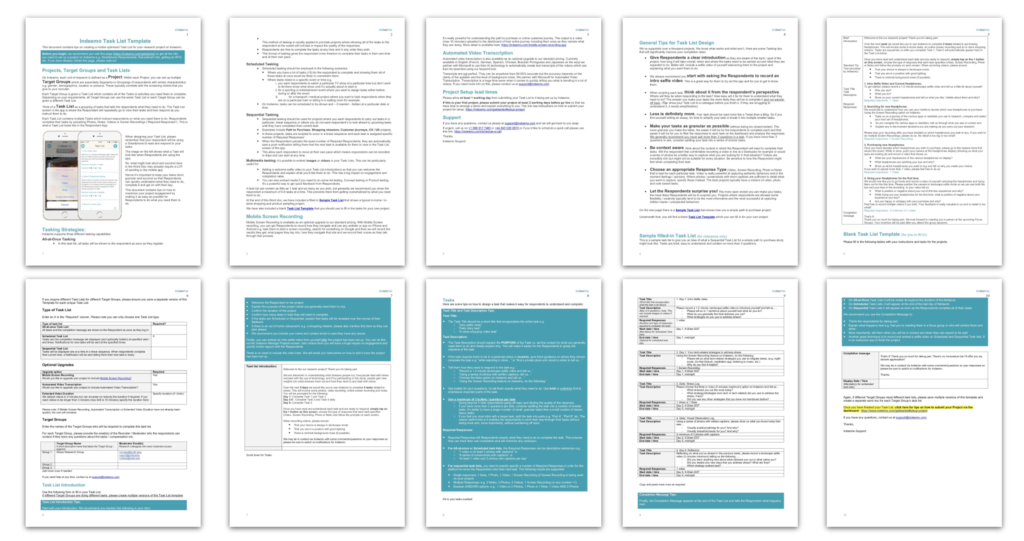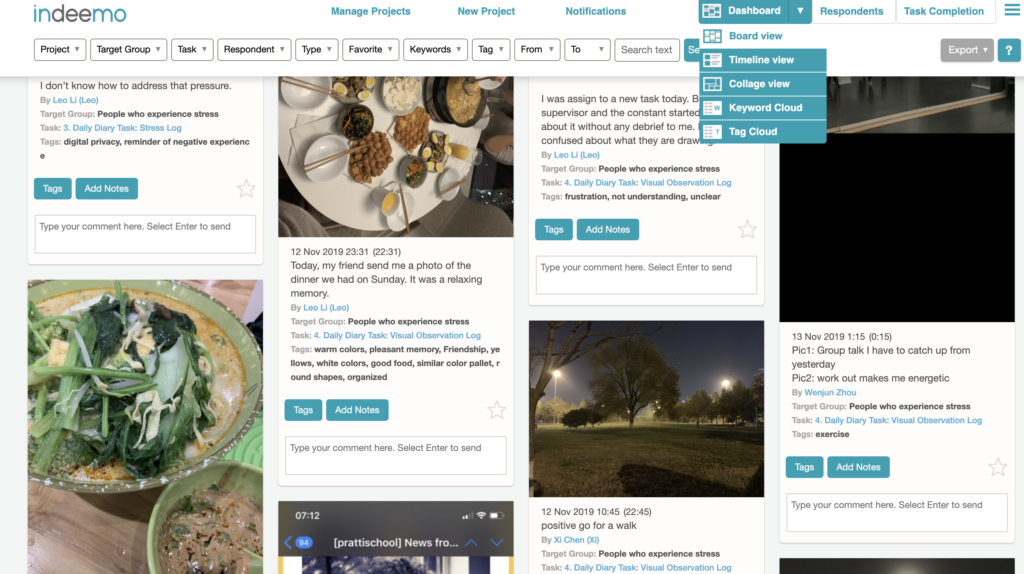Introduction
Diary study is a research method that takes place over a defined research period, which can vary from a few days to months, and the participants will be asked to self-report data following the instruction, which allows the researchers to gain insights from their day-to-day lives. Although being called “poor man’s field study”, it is still popular among the researchers, due to its flexibility. However, just like any other remote research method, communication is always challenging.
I encountered Indeemo when working on one of my projects, in which we needed to conduct a diary study with three participants living across the world in different timezones. The online platform was developed to mitigate the cumbersome process of logging and collecting data with private blogs, social media, text or email, etc. With an easy-to-use mobile app for participants and a website for data analysis, Indeemo tried to create a more efficient and effective user experience for both parties involved.
How it works

To initiate a test, the research must contact Indeemo in-person to receive a template task list. Base on the guidelines, the research will need to design the task questions, strategy, as well as what media the respondents should use. The test will be set up after the document is sent back and reviewed by an Indeemo project manager. The researchers can then gain access to the project dashboard to add recruited participants or manage the project. Indeemo also provides a template invitation letter with detailed instructions for the researchers to send out to participants when the test is ready to be launched.

Soon after the launch, researchers can start to analyze the results as the participants completing the tasks since the results show up in the dashboard in real-time. the results page features rich filtering capabilities that allow the research to filter content by categories like tasks, respondent, keyword, and responding time, etc. Manual tagging and favoriting of content enable thematic analysis. Keywords and tags can be automatically counted and presented in a cloud view. In addition to that, automated transcription allows the research to perform a search for a specific word in videos.
Pros and Cons
Overall, Indeemo is a handy tool for conducting a diary study and its interface is simple and intuitive to use. The support of text, image, video, and screen recording submission allows the researchers to gain both subjective and objective data. However, sometimes the results could be unexpected since despite the format of submission is clearly stated under each question, participants are still able to upload responses in other formats. Additionally, moderators can prompt the respondents and initiate a conversation for follow-up questions when needed, which alleviate the gap between the researcher and respondents, however, it potentially could stress out the participants. Last but not least, currently, Indeemo is using a “project managed” model which requires frequent communication between the research team and the “project manager”. It could be a great thing for a novice user, however, for most researchers, the process is just cumbersome and takes up too much time.
